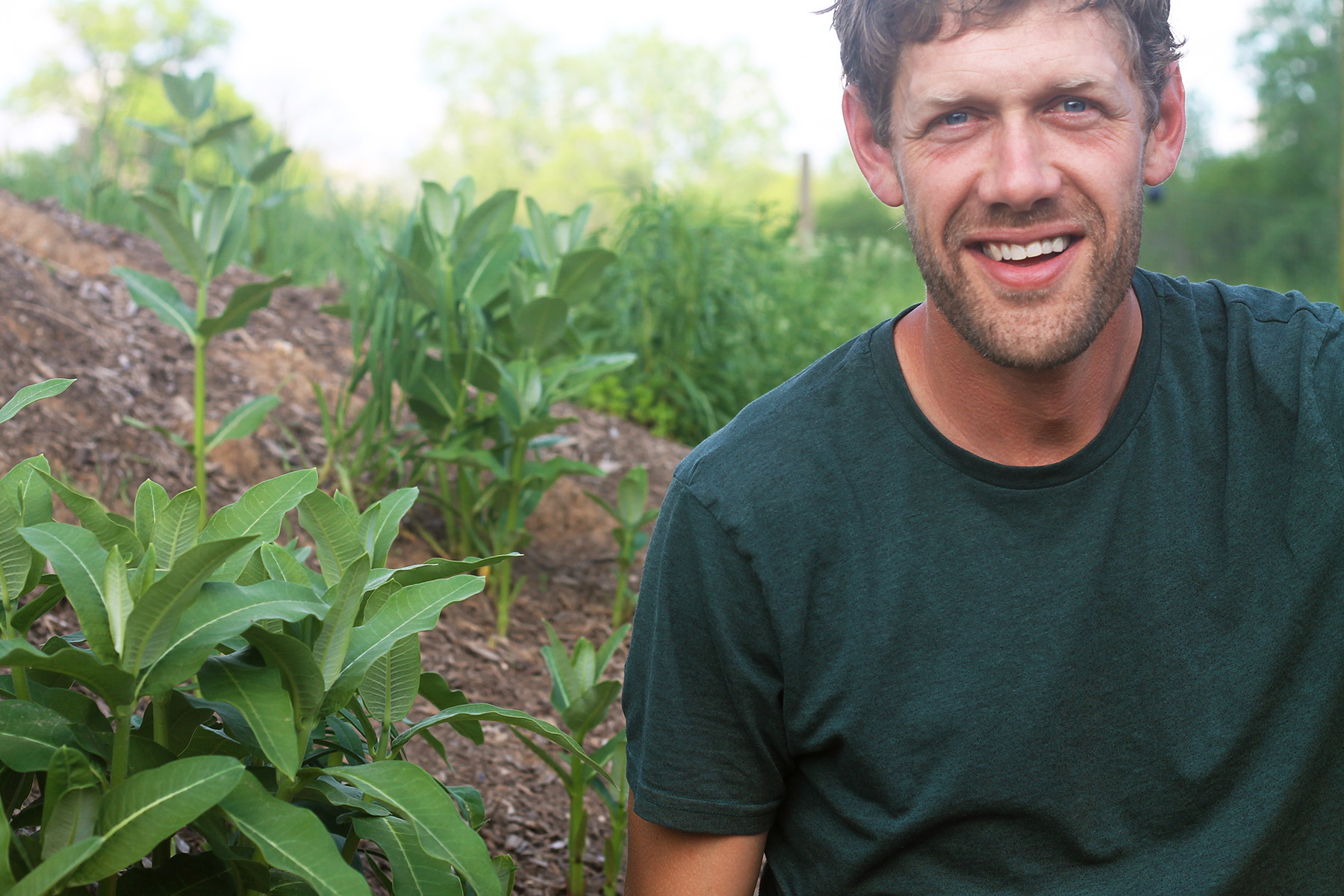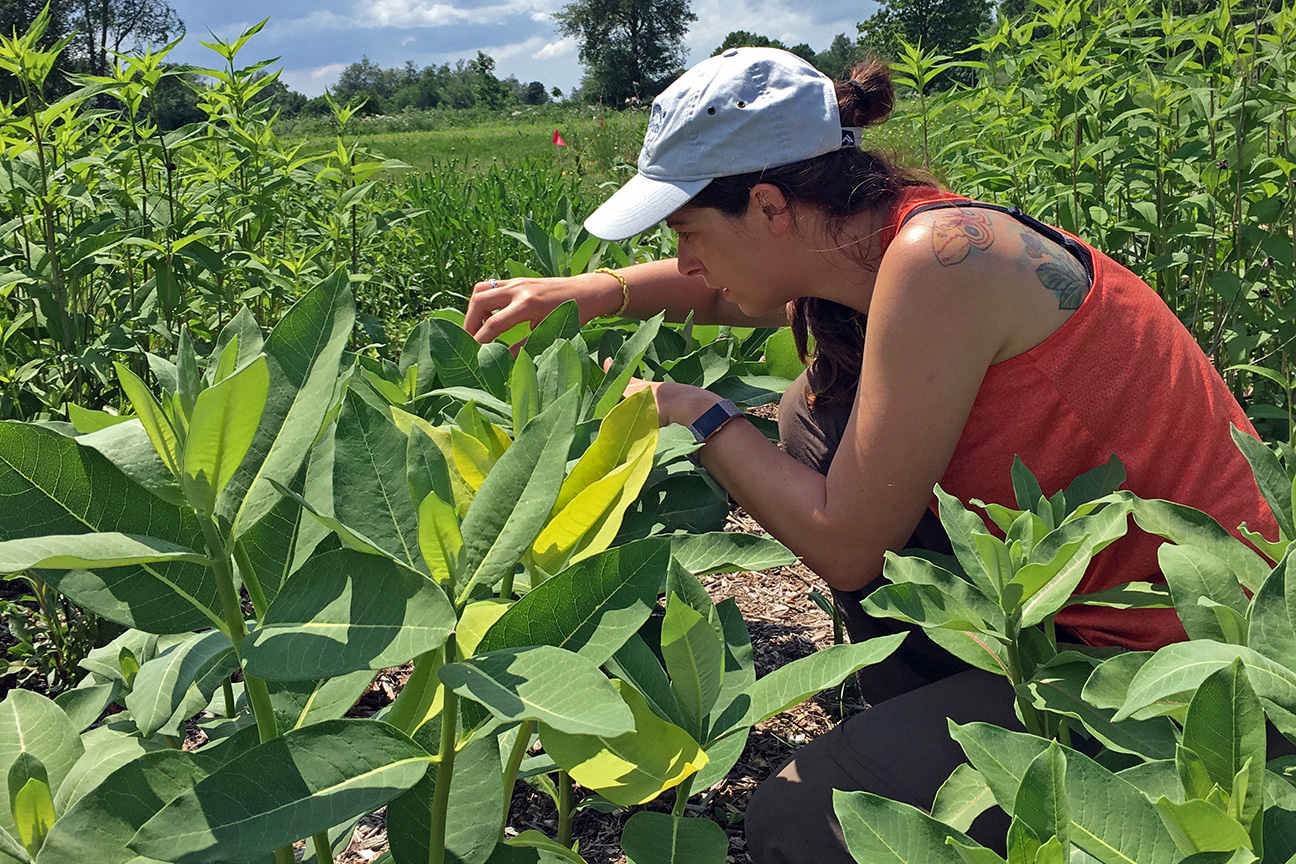
Launching a research project is typically a multi-step, drawn-out creative process. It starts with ideas and literature searches, develops into finding collaborators and funding and often requires multiple years to thoroughly test hypotheses. This spring with restrictions in place due to the novel coronavirus, the carefully laid plans of many researchers at Michigan State University have been upended.
Doug Landis is a University Distinguished Professor of Entomology who studies the role of insects in agricultural and natural resource systems. His team has spent several years studying how monarch butterflies interact with milkweed and monarch predators. Their research had revealed a promising new technique for enhancing monarch habitat: cutting common milkweed at strategic times during summer generates regrowing stems that are highly attractive to egg-laying monarch butterflies and harbor fewer predators, resulting in greater monarch survival. They were excited to test it in more locations and had enlisted colleagues across the Midwest to replicate the study. But COVID-19 changed their plans.
“The restrictions for social distancing, destroyed our initial plan to send several cars of student researchers out to observe and collect data for this project. Typically we might have had 15 to 20 Michigan research sites visited multiple times during the summer, said Landis. “We began to realize that we were going to have to find a very different way to collect the data.”

Nathan Haan is a post-doctoral research associate in the Landis lab. “Like a lot of people, we had a rough couple of weeks of uncertainly, not knowing what the summer would look like or if we could do our studies at all,” said Haan. “But then we started turning COVID-19 ‘lemons into lemonade’.”
Landis heard that MSU Extension educators were having tremendous response to online activities and began to think about harnessing that interest through citizen science. Citizen science, also known as community, crowd-sourced or civic science, is scientific research in which members of the public collect data. Use of the word 'citizen' has nothing to do with citizenship status in the US or any other country and participation is open to all. Haan studied various successful citizen science projects and the literature behind them and tried to identify the best approaches for the monarch project.
Over about one month, lab members brainstormed via zoom and phone conversations to develop ReGrow Milkweed for Monarchs, a citizen science project. To participate, people need access to common milkweed on their yard, farm or other property. At specific times this summer they will be instructed to cut a portion of their milkweed patch. As it regrows, study participants will visit the patch each week to count and report the number of monarch caterpillars and eggs they see in trimmed and untrimmed milkweed.
“Most citizen science projects ask people to make relatively basic observations, like when did this bird arrive or when did this tree bloom. Our project is different in that we are asking them through a simple set of instructions to conduct an actual experiment, complete with hypotheses, treatments, controls and observations that can detect cause and effect relationships. I think this gives them deeper insight into how science really works,” Landis said. “I’m finding that the opportunity to inform the public about how scientists think and do their work is an important part of this project for me. This will help people understand how scientists interpret the world and how we share information. It’s not just about collecting data anymore.”
Adding another component to the project, Michigan elementary teachers, Britney Christensen and Gabriel Knowles, have joined the team by obtaining National Science Foundation funding that supports research experience for teachers. They will be conducting experiments themselves and thinking about how educators could use the data to develop classroom activities that deepen students’ understanding of the scientific process while learning cool things about monarchs.
“At the start of the year we hoped to have six or eight scientists replicating this work and now we have more than 700 people expressing interest in collecting data for us across multiple states. It’s exciting and terrifying, but we believe we will be able to make much quicker advances in our understanding by having this many different sites represented,” said Landis.

Elizabeth D’Auria, the lab’s research technician often spends much of her summer in the field collecting data. This year she has pivoted to working on communications for this project hosting a website, managing various social media accounts and corresponding with prospective participants. “I’ve been surprised by our reach,” said D’Auria. “We’ve received messages from people who want to participate in places spread from Canada to Texas.
“The end goal is to get data for our research, but everything with this process serves to educate people interested in monarchs and let them contribute to conservation. At first I didn’t know what we were going to do when we all headed home to work remotely in March, but this is a bright spot!”
“A team of five people have organized this remotely in about a month,” noted Landis. “Had we done this work the traditional way, we would have perhaps exposed 20 to 30 people to the research process. By using citizen science, we hope hundreds of people will learn hands-on how they can do science while conserving monarch butterflies. Could be a win-win for people and butterflies.”
To learn more or participate in this research, visit: ReGrow Milkweed for Monarchs: A Citizen Science Study
Thanks to these funding sources: MSU Department of Entomology, the North Central IPM Center, MSU AgBioResearch, Kellogg Biological Station Long-Term Ecological Research and the Crop Protection and Pest Management Program 2017-70006-27175 from the USDA National Institute of Food and Agriculture.



 Print
Print Email
Email




